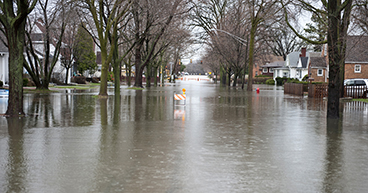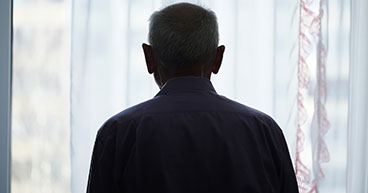
Who doesn’t love to accessorize? Watches. Jewelry. Handbags. Ties and scarves. They may not always be practical, but they help us look good and maybe feel a little extra special.
If you have cancer, accessories aren’t about style or fashion. Oxygen devices. Syringes. Infusion ports or implants. These accessories and devices help provide care or help maintain quality of life. And they aren’t always welcomed accoutrements.
Medical accessories can be bulky and, if implanted or attached, cumbersome or uncomfortable. And medical accessories may also pose specific challenges for patients who need or want to travel.
But having to carry oxygen, an ostomy bag or medical equipment around doesn’t have to stop you from seeing loved ones during holidays season, or any time of year.
In this article, we’ll explore:
- Traveling with oxygen
- Traveling with syringes
- Traveling with medical equipment
- Getting travel assistance
If you’ve been diagnosed with cancer and want to get a second opinion on your diagnosis or treatment plan, call us or chat online with a member of our team.
Traveling with oxygen
The air we breathe typically contains 21 percent oxygen, but some cancer patients, including lung cancer patients or those whose cancer has metastasized to the lungs, may need more than that. The air in pressurized airplane cabins has only 15 percent to 18 percent oxygen. Although you may be sitting, it’s important that you wear your oxygen to prevent excess strain on your heart and lungs.
Whether you’re planning to travel by plane, train or automobile (or cruise ship), the following tips will help you travel with oxygen.
Make plans in advance. Notify the airline, bus line, train carrier or cruise line in advance of your departure date that you will need oxygen during your trip. While airlines and bus lines only require about three days prior notice, cruise lines may require up to six weeks.
Bring your prescription. Carry your oxygen prescription with you. Some airlines also require a letter or medical form written by your doctor.
Take extra supplies. Bring extra batteries for your portable oxygen concentrator (POC) and extra nasal prongs or cannulas. If you’re traveling abroad, make sure you have the right electrical adapter for your POC. Note: Some airlines do not allow the use of POC’s during the flight. If you will need oxygen while flying, be sure to arrange with the airline ahead of time.
Plan for airport security. Carry your POC, facemasks, tubing and other equipment in their carrying cases for X-ray security screening. Liquids used with your nebulizer are exempt from the 3-1-1 rule, so may be carried on the plane.
Take extra oxygen. Travel with extra oxygen units (as baggage if allowed). If you will be away from home for several days, contact your oxygen supply company to set up delivery at your destination.
Car travel considerations. If traveling by car, secure the tank upright (a seat belt works well if the tank is placed on the seat). Keep two windows open a crack to help circulate air and do not allow smoking in the car. Also don’t leave oxygen tanks in a hot car.
Carry a monitoring device. Consider buying and bringing along a pulse oximeter to help monitor your oxygen levels.
Traveling with syringes
Some cancer patients take medications given by injection, such as Neulasta® and Neupogen®, used to prevent infection following chemotherapy treatments. Cancer patients who also have diabetes may need to travel with insulin. These medications require syringes and needles (or prefilled syringes) and may need to be kept cold.
When traveling by air, injectable medications are considered liquids but are exempt from the standard Transportation Security Administration (TSA) liquid restrictions. This means you’re not limited to the maximum 3.4-ounce rule that applies to other liquids.
According to the TSA website, you should let the TSA officer know you have medically necessary liquids and place them in a bin separately for X-ray screening. If you don’t want your medications opened or X-rayed, let TSA know so they can use alternative ways of screening.
TSA may require that you justify the quantity of liquid medications you’re carrying at security checkpoints. This can be done by showing appropriate documentation, including:
- A medical prescription or a doctor's letter specifying the dosage
- Clearly labeled medications (including prefilled syringes)
- A TSA Notification Card as described previously.
Traveling abroad with injectable medications may require more extensive documentation. To ensure you comply with foreign laws, the Centers for Disease Control and Prevention gives you a way to research the specific requirements of your destination country. In addition to the documentation for domestic travel, be sure to carry:
- An official medical prescription that specifies the drug name, dosage, and the condition it’s prescribed for
- A statement from your doctor explaining the necessity of your medication, particularly if it’s considered a narcotic or other controlled substance
- Proof of your medical travel insurance
- Translation of the documents into the primary language of the country or countries you will be visiting
Traveling with medical equipment
Cancer patients may need other medical devices and materials to deal with their disease, including:
- Ostomy bags
- Blood pressure monitors
- Blood sugar monitors
- Insulin pumps
- Ports, catheters or implanted pumps
- C-Pap devices
- Dialysis devices
- Medications in pill and liquid form
- Mobility devices
The need for these devices or equipment doesn’t go away just because you’re traveling.
While standing in long lines and getting through security is an inconvenience for most fliers, security screenings present both physical and emotional challenges for cancer patients.
Having an ostomy bag touched by security personnel or being asked to lift clothing in a crowded airport to expose ports, drains or bandages may prove embarrassing for some, traumatic for others. That’s why it’s important to know that help is available to make the screening process easier and less stressful, for cancer patients and their caregivers.
The Transportation Security Administration offers the following tips for cancer patients:
Inform officers of your devices. Before the screening process begins, let a TSA officer know if you have an external medical device, such as a port, a feeding tube, an insulin pump or an ostomy bag, and where it’s located. You may provide the officer with the TSA notification card, or other medical documentation if you prefer.
Performing pat-down procedures. TSA has standardized screening procedures for various medical conditions and disabilities, including allowing a passenger with an ostomy bag to perform his or her own pat-down. The passenger’s hands would then be tested for traces of explosives. The passenger may still be required to undergo a standard pat-down on areas of the body that are not connected to the ostomy bag. TSA provides information specific to various situations.
Medical devices aren’t carry-ons. Many medical devices, such as dialysis or C-pap machines may be carried on a plane but won’t county toward your carry-on limit. Make sure to let an airline representative know what medical equipment you need to carry on.
Travel-companion assistance. If you want the companion or caregiver traveling with you to remain with you during the screening, let the TSA officer know. TSA gives you the right to have your travel companion witness your screening.
Medically necessary wearables. Breast prostheses and mastectomy bras are considered medically necessary and may be worn during screening. Patients will not be asked to remove them.
Getting travel assistance
Recognizing the toll the process may take on passengers with medical conditions and disabilities, the federal government’s Transportation Security Administration launched the TSA Cares program, complete with a toll-free helpline, 877-787-2227.
Travelers may call the number to ask about alternative screening options for specific conditions, or to arrange for a trained passenger support specialist to help them through the security process.
To make the program work smoothly, the TSA offers suggests:
- Be specific about the type of assistance you need
- Call 72 hours before your scheduled flight
- Know the helpline’s hours of operation. — weekdays from 8 a.m. to 11 p.m., and from 9 a.m. to 8 p.m. on weekends and holidays
- Take advantage of TSA Cares’ social media platforms — available live 365 days a year via Twitter using the handle, @AskTSA—weekdays from 8 a.m. to 10 p.m., and from 9 a.m.to 7 p.m. on weekends and holidays. Travelers may also send questions to TSA via Facebook Messenger on the agency’s Facebook page
- Notify TSA if a private screening was not made available to you, since all airports should have that capability
If you’ve been diagnosed with cancer and want to get a second opinion on your diagnosis or treatment plan, call us or chat online with a member of our team.



